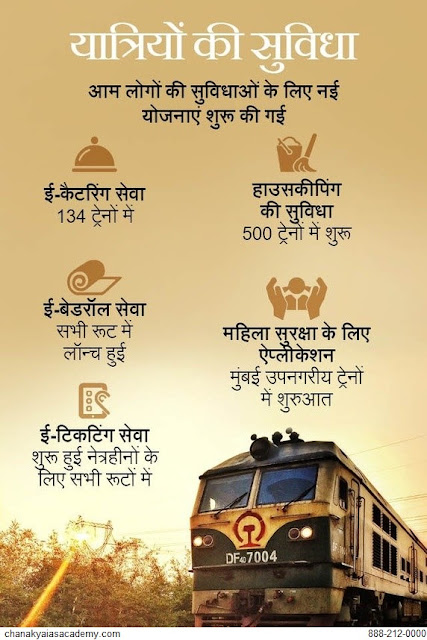In light of the recent Indore-Patna train accident in Kanpur, discuss the problems related to the safety and security of the passengers traveling in Indian railways. Also, discuss the steps taken by the government in this regard.
Railways in India carry a bulk of passengers every day. Safety, comfort and security of the passengers are therefore very important. A large number of people are dependent upon the railways. Still, there have been many cases of accidents so far. It raises an important question on the efficiency of the department.

Some of the basic problems of the Indian railways:
The Anil kakodkar Committee has recommended several measures to prevent rail accidents. Some of them are:
Apart from the committee’s recommendations, the railway sector is focusing on better administration, development of pending projects, modernization, technological innovation, promotion of research and development, increasing the railway links, fast delivery mechanism and better infrastructure.
Railways in India carry a bulk of passengers every day. Safety, comfort and security of the passengers are therefore very important. A large number of people are dependent upon the railways. Still, there have been many cases of accidents so far. It raises an important question on the efficiency of the department.

Some of the basic problems of the Indian railways:
- The railways lack innovation, research and development, infrastructure even after getting a financial autonomy.
- Tracks are not managed properly. Most of them are in dilapidated conditions which make them vulnerable for derailment.
- Lack of coordination among the personnel also encourages accidents.
- Poor finances, poor management, are very common in the sector.
- As for speed, Indian superfast trains have speeds of 130km per hour to 160km per hour at the max. Whereas in other countries, the premium trains move as fast as 300km per hour.
- Lack of prioritizing the research and development sector. Finances are directed towards subsidies and benefits to the passengers instead of development.
- There is a populism approach in order to gain votes. Due to which, the goods or freight have to subsidize the passenger fares.
- The budget allocated for railways cannot, therefore meet the railway sector demands.
- There have been several cases of fire in railways which implies that fire safety is not ensured properly.
- There is a lack of preventive methods of accidents. Such as alarm systems or emergency brakes, etc
- Other countries are highly developed in the railway sector. Trains run as fast as 300kmph with almost zero cases of accidents. Moreover, the punctuality of the service is worth praising. There is even compensation for delays in trains.
The Anil kakodkar Committee has recommended several measures to prevent rail accidents. Some of them are:
- Constitution of an independent railway body like the Railway Safety Authority under the government with experts.
- There should be a robust and powerful Safety Architecture.
- Elimination of both manned and unmanned level crossings within the next five years as a measure of avoiding accidents and deaths.
- monitoring of all the bridges in terms of scientific measurements of deflections, water level and flow velocity
- advanced signaling system based on continuous track circuiting and cab signaling similar to European train control system Level-II
- Train accidents at unmanned level crossings have been relatively low in the last few years.
Apart from the committee’s recommendations, the railway sector is focusing on better administration, development of pending projects, modernization, technological innovation, promotion of research and development, increasing the railway links, fast delivery mechanism and better infrastructure.